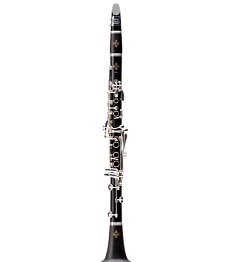Stepping Up to an Intermediate Instrument
Most students start their musical journeys on beginner instruments, which are durable and easy to play. As students progress in their playing style and begin to play more advanced pieces, they may notice that their starter instruments don't produce the tone they want or respond quickly enough to play more complicated passages. So, once your young musician has made a commitment to an instrument and has played for several years, you may want to consider investing in a higher-grade instrument.
When you begin the search for a step up instrument, there are several things you should look for. These characteristics apply whether you are seeking an intermediate woodwind, brass or stringed instrument.
Materials
 Beginner instruments are made with materials that are durable and are built to withstand the rigors and abuse that young students tend to subject them to. Beginner instruments also use materials that allow greater consistency when there are changes in temperature and humidity. For example, many student-level clarinets are made of plastic or resin. In addition, the materials that beginner-level instruments are made of help to compensate for inexperience by limiting tonal ranges so students can blend together better.
Beginner instruments are made with materials that are durable and are built to withstand the rigors and abuse that young students tend to subject them to. Beginner instruments also use materials that allow greater consistency when there are changes in temperature and humidity. For example, many student-level clarinets are made of plastic or resin. In addition, the materials that beginner-level instruments are made of help to compensate for inexperience by limiting tonal ranges so students can blend together better.
When looking at step up instruments, you’ll notice they use higher quality metals such as silver or gold or wood like grenadilla. For orchestral strings, flamed, seasoned wood provides a bigger, fuller sound, and better bows with high quality horse hair help them respond more readily. These premium materials allow musicians to play with richer, fuller tone and express a wider variety of tonal capability.
Size
Beginner instruments are made for smaller hands and body frames and less lung capacity. This is ideal for when students are learning the fundamentals and need to be able to easily hold the instrument and, for wind players, not have to blow too much air to produce sound.
As students develop better breath skills and lung capacity, they will be able to supply a larger volume of air through the instrument, resulting in warmer, richer, fuller tone. Therefore, the diameter of the tubing (bore size) will be larger on a step-up instrument. For string players, stringed instruments like violins and violas come in many sizes to accommodate growing arms and frames.
Additional Features
If you’re looking to invest in an intermediate instrument, there are some other features you may want to pay attention to that will help you understand why a step up instruments cos ts more and sounds better:
ts more and sounds better:
Handwork/craftsmanship – most intermediate instruments feature more handwork (like hand engraving on a horn’s bell) or handcrafted construction instead of fully machined parts. You certainly won’t find the level of craftmanship as you’ll find on a professional or vintage instrument, but it’s definitely something to look for when you invest in a step up.
Additional valves, keys or triggers – you’ll find that many woodwind instruments have additional keys that are necessary for more advanced music. Brass instruments like trombones will have an F attachment while French horns, baritones and tubas have additional valves.
If you’re considering a step up instrument for your brass, woodwind or strings player, be sure to understand the musician’s skill level, playing style, lung capacity, arm length and overall frame size to be sure you select the best intermediate instrument. This is a longer term and bigger investment than a beginner instrument, so you want to be sure to make the right choice. Take advantage of our 45-Day Satisfaction Guarantee to ensure you get the right instrument for your student.
Learn more about stepping up to more advanced musical instruments or call us at 800.348.5003 for expert advice on intermediate instruments.


